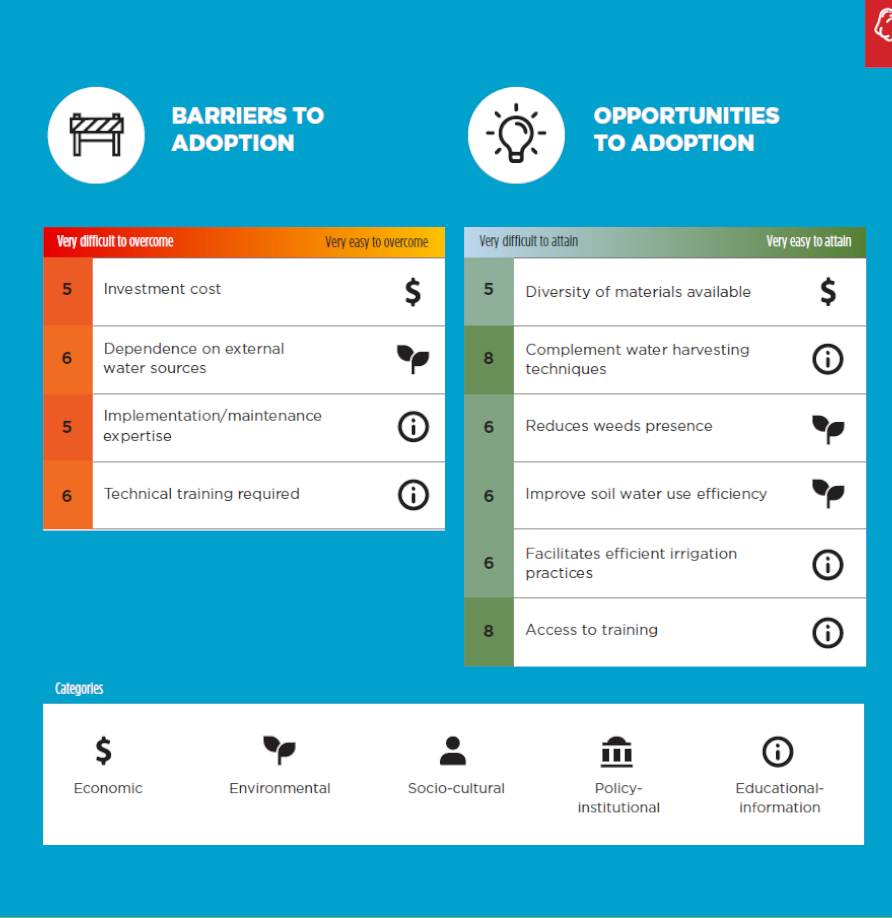Climate-Smart Agriculture Rapid Appraisal with farmers
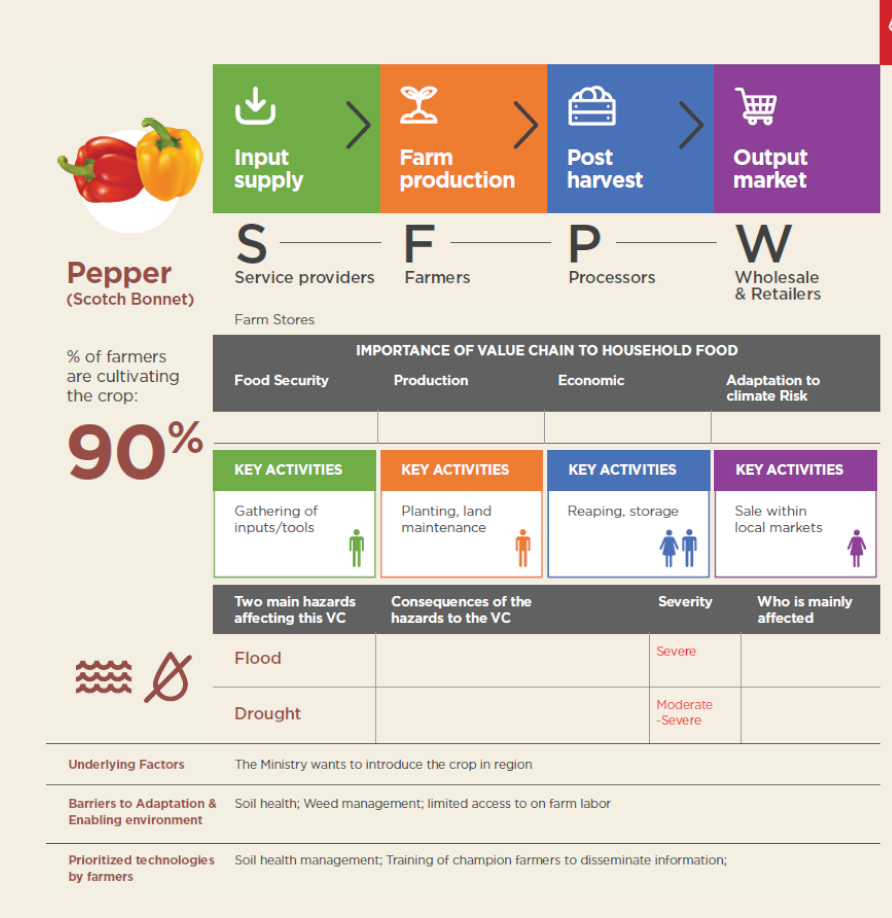
Scotch bonnet peppers (otherwise called ‘hot peppers’, ‘bonney’ or ‘Caribbean red peppers’) are a variety of chili peppers, which are usually fairly round or slightly elongated in shape. These peppers are also related to habanero peppers, and are often red or yellow when ripe, but may also be green or brown when reaped. The name ‘scotch bonnet’ refers to its shape, resembling a tam o’shanter Scottish hat.
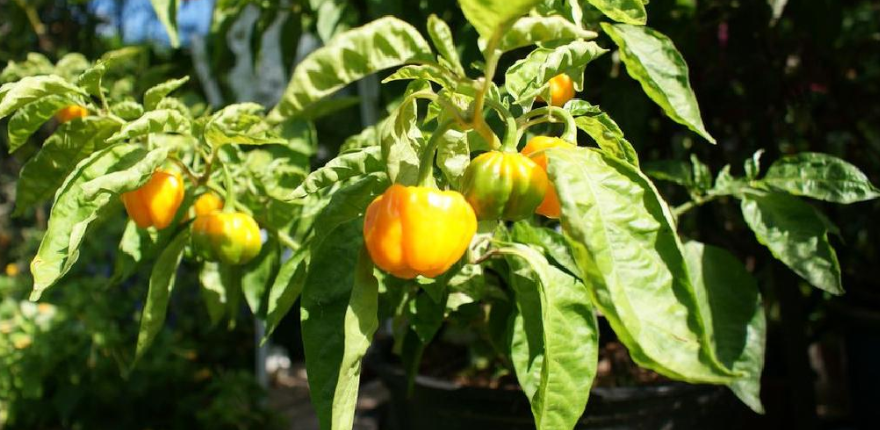

As with other crops, crop rotation is a beneficial practice for scotch bonnet peppers to reduce pests and diseases, and for soil nutrient balance. It is not recommended that scotch bonnet pepper crops be grown repeatedly in the same area. Corn and other selected legumes are recommended barrier crops for scotch bonnet peppers, as it does not host the broad mite (which is a pest that often affects the scotch bonnet crop). In contrast, it is recommended to avoid growing scotch peppers close to tomatoes, beans, cowpeas, coffee, potatoes (sweet or irish), papaya, guava, mango, citrus, or avocado, as these crops are often hosts to the broad mite.
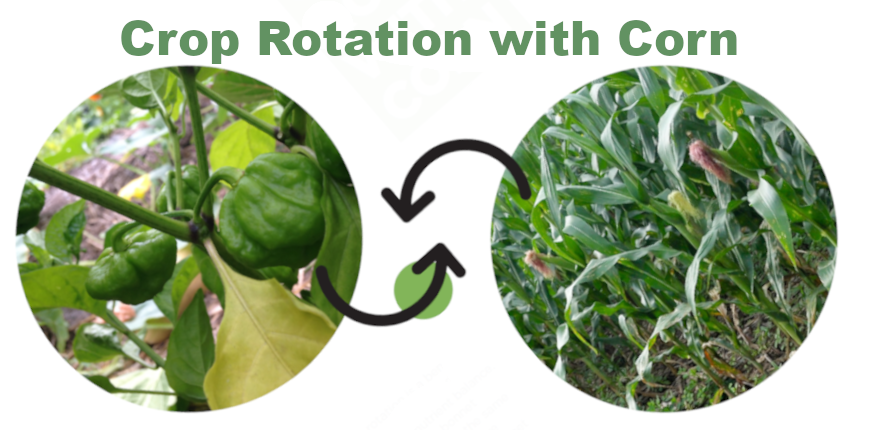
Synergistic practices are those practices that when implemented together interact with each other to produce a greater positive effect on the crop and the agroecosystem than they would have when implemented separately:
PROFITABILITY INDICATORS
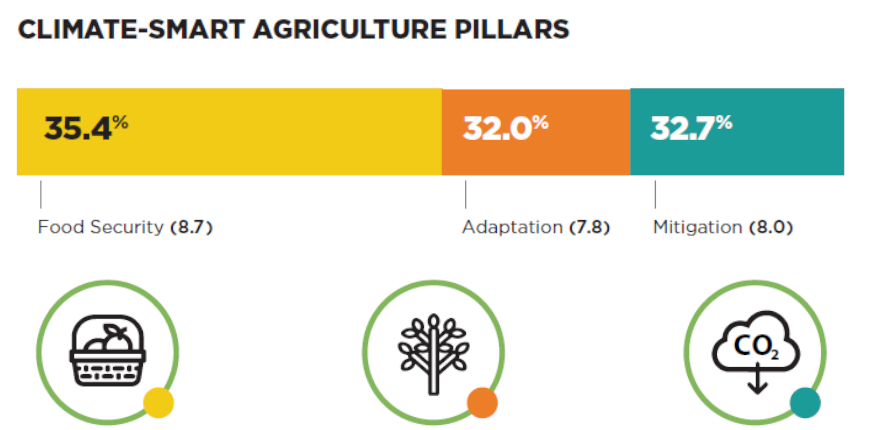
Food Security
Adaptation
Mitigation


Hot pepper does not thrive under drought conditions and irrigation is essential to produce consistent yields of high-quality hot pepper in the drier periods of the year. Irrigation is the application of water to plants to address crop water needs brought about by rainfall deficit so that there is optimal plant growth. The crop water needs of hot pepper averages about 500 mm of water per plant for the entire production period. Where rainfall is adequate, that is, above 1,300 mm annually, the planting of hot peppers should be timed to benefit from rainfall because often the highest yields are obtained under rainfed conditions supplemented by drip irrigation. Irrigation water is mainly supplied to the crop by sprinkler or overhead irrigation or drip lines. The critical moisture periods for hot peppers are: 1) during the seedling stage, 2) at transplanting and the week after, 3) just before flowering and 4) during fruit set and development.
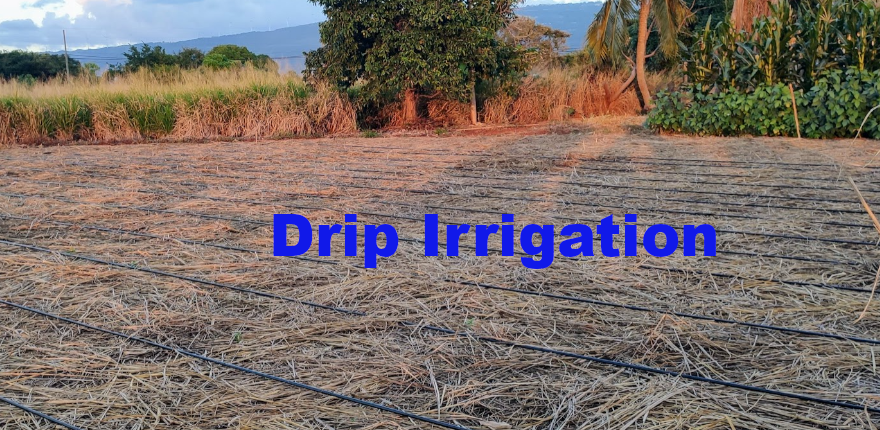
Synergistic practices are those practices that when implemented together interact with each other to produce a greater positive effect on the crop and the agroecosystem than they would have when implemented separately:
PROFITABILITY INDICATORS
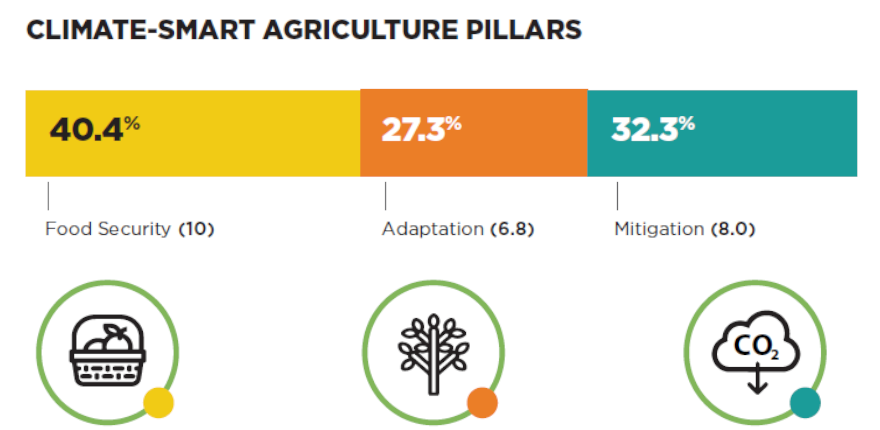
Food Security
Adaptation
Mitigation

